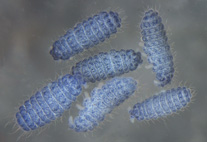Abstract
Farming of finfish in sea cages is gaining popularity worldwide. These systems are a suitable environment for the emergence, establishment and transmission of parasites or pathogens, such as sea lice (Copepoda: Caligidae), known to cause serious diseases and economic losses in finfish aquaculture worldwide. In coastal waters of Jaramijó, Ecuador, there are plans to culture spotted rose snapper (Lutjanus guttatus) and longfin yellowtail (Seriola rivoliana); however, the information about the occurrence of sea lice on fish from this country is scarce. To address this problem, a parasitological survey of economically important fish caught by artisanal fishermen was conducted between June 2013 and May 2014. A total of 608 fish belonging to 66 species were examined. Sea lice were found on 23 fish species. The diversity of these parasites consisted of 22 species of Caligus and 5 species of Lepeophtheirus. Most sea lice species (66%) occurred in a single fish species only, with low infection levels. The most frequently encountered species were Caligus asperimanus Pearse, 1951, Caligus mutabilis Wilson, 1905 and Caligus rufimaculatus Wilson, 1905. Taxonomic remarks are presented for some of the species recorded during this survey. All but two sea lice records are new to Ecuador, considerably expanding the geographical range of some species.

